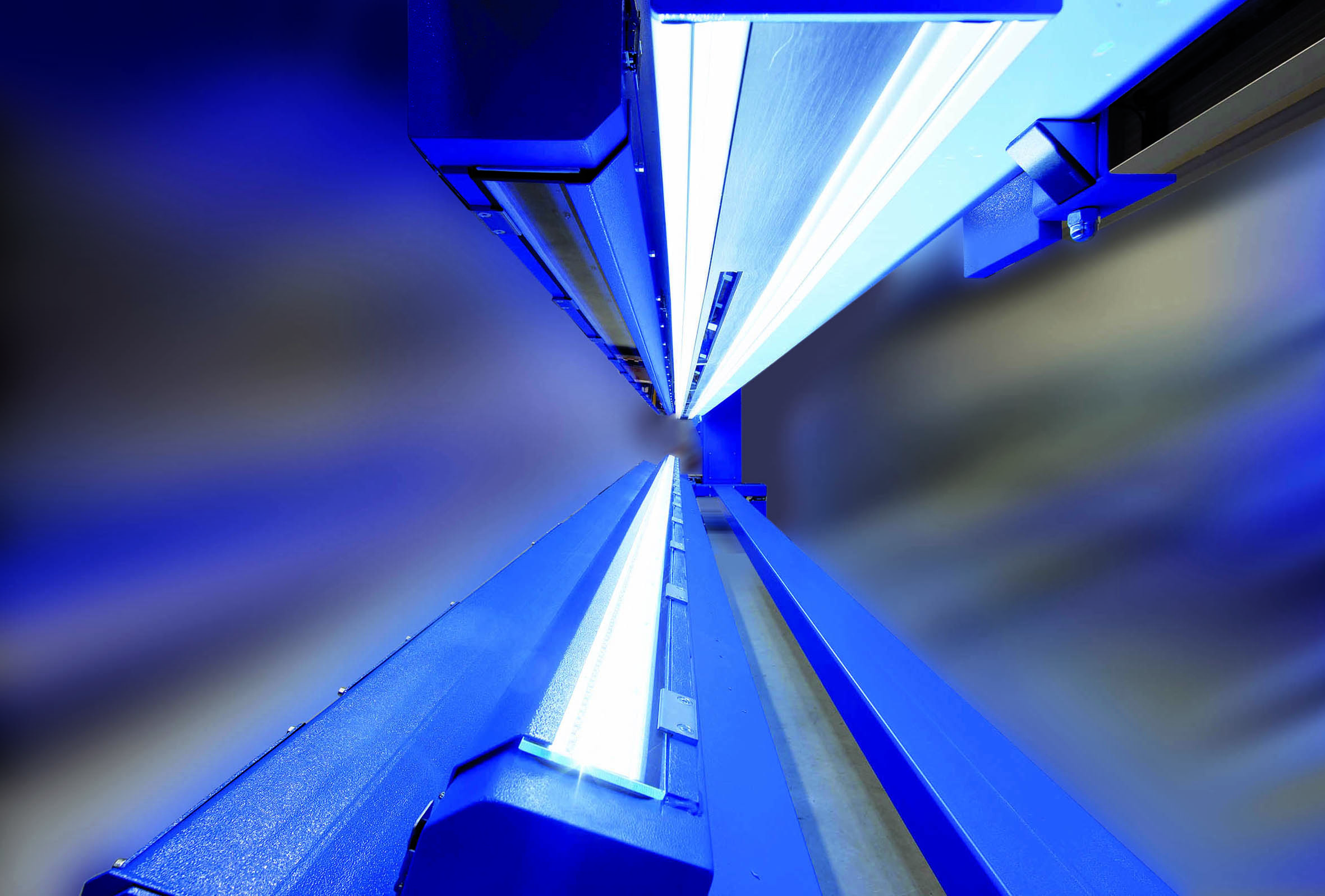Float glass is enormously important as a base material for countless glass products. An increasing number of potential applications in sectors, such as architecture, electronics and the automotive industry have resulted in heightened demand on the one hand and continuously increasing quality requirements on the other. Therefore, even the first process step plays a decisive role in determining the attainable quality of the final product: The highest quality is only possible with a flawless raw material.
This is where ISRA VISION’s FLOATSCAN-5D-system comes in, which enables direct quality control through early and complete inspection. Performing inspections at the earliest possible stage prevents the cost-intensive processing of products that are subsequently rejected. The all-in-one camera system combines five optical channels, thereby enabling special multi-dimensional inspection. It not only provides the exact position of defects on the top or bottom of the glass ribbon but also localises flaws inside it.
Optimum product quality
The core-size accuracy now offers twice the precision: An optimised optical setup enables improved size classification and a more precise differentiation between quality levels, thereby optimising both the yield and deployment of resources. At the same time, the quality is improved further by enabling even more precise classifications.
In the optical channel, for example, multi-filtering algorithms mean that various limits can be selected for each sub-channel with the highest level of accuracy. Additionally, a pre-filter for reducing high frequency signal variations optimises the detection of faint reams.
Diagonal reams, such as V-shapes, are also detected more accurately thanks to an additional module checking fast changes of distortion in transport direction. Very narrow cords below the system resolution can be recognised through a combination of cross dark field and moiré analysis. At the same time, colour monitoring of the homogeneity of the online coating improves quality and uncovers potential for process optimisation.
The latest version of the coating colour channel, with its robust design featuring a special RGB camera technology and durable white LED technology, inspects all colour variations across the entire surface. Coloured lines, dots and zebra defects are among the flaws detected by this process. Furthermore, the improved access for maintenance is another practical feature. This allows the removal of reflection and transmission lighting independently of one another.
Staying ahead of the competition
The FLOATSCAN system is a renowned industry standard throughout the world and has established itself as a proven solution that customers have been relying on for many years. Therefore, many of the latest features are also available for existing systems in the form of updates.
The FS-5DXIN is one of the key products of this comprehensive glass inspection portfolio. ISRA’s solutions optimise quality and processes throughout the entire float glass production process. These include POWERPLATE 3D (P2-3D), the first and only solution for measuring flatness and waviness in a matter of seconds.


